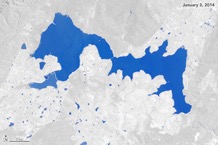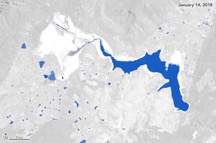Cape Town is currently facing the largest water crisis in its modern history. Referred to as Day Zero, the city is rapidly approaching a complete shutdown of municipal water. As government officials estimate taps to run dry by early July 2018, efforts are underway to avert the crisis. Water consumption was initially limited to 87 litres per person per day, with the government issuing fines and publishing name-and-shame lists of known perpetrators. Despite these efforts, the local population appears unwilling to reduce consumption, forcing authorities to further lower thresholds to 50 litres per day.
As water levels keep declining, Day Zero increasingly appears inevitable. The complete shutdown of municipal water will see the government provide controlled allowances of 25 litres per day under strict marshalling of the military from collection points. Meanwhile, the armed forces are preparing for a state of emergency, transforming barracks into water storage facilities and evaluating distribution networks. Despite the efforts, the local government appears so ill-prepared that any further escalation could have devastating effects. The current strategic plans for 200 collection locations throughout the municipality. With a population of 3,7 million inhabitants collecting supplies, this suggests for chaotic scenes at collection points.
But how did Cape Town end up fearing for its water supply? The main reason is undoubtedly the drastic decline in rainwater feeding the surrounding reservoirs. While annual rainfall averages 515 mm, the past three years have seen over a 50 percent reduction to an average of 234 mm, with 2017 accounting a record low of 157 mm. The Theewaterskloof Dam – Cape Town’s largest natural reservoir – with storage capacity currently down to 10 percent, epitomises Cape Town’s enduring drought.

Satellite images of the main Theewaterskloof Dam, January 2014; Source: https://earthobservatory.nasa.gov/IOTD/view.php?id=91649

Satellite images of the main Theewaterskloof Dam, January 2018; Source: https://earthobservatory.nasa.gov/IOTD/view.php?id=91649
Despite being Cape Town’s most severe drought in recorded history, the underlying problem appears more complex. While the municipality’s population has doubled over the past 30 years, investments in water management have remained stagnant. The city sources its water from a series of reservoirs, leaving it highly vulnerable to changing weather patterns. Although the region is surrounded by sea water and rich in natural aquifers, the strategy for water management has never been diversified.
The lack of long-term planning and comprehensive diversification strategies leads to the heart of the current water crisis. As financial resources for investments in water management are insufficient on municipal level, the region is dependent on development allocations from the national development budgets. However, the past decade has seen insufficient funding allocated by the ruling African National Congress (ANC) party towards the Western Cape – a region firmly controlled by the opposing Democratic Alliance (DA). While the ANC has refrained from officially declaring a state of emergency to mobilise aid funds desperately needed by the region, efforts are now underway for developing desalination plants in Western Cape. However, with Day Zero relentlessly approaching these efforts might be too little, too late.
The political power game in Western Cape is being fought on various stages. It is most predominantly visible in the housing development initiatives for the Philippi Horticultural Area – a stretch of farmland cultivated by low-skilled labour that supplies the majority of fresh produce to the region. Nevertheless, the current crisis gives rise to the greater question of political implications of water shortage. While the narrative predominantly focuses on threats of cross-national outbreaks of war, the implications for domestic politics may be more severe. With water security becoming an increasing concern, the real threat may arise from the exclusion of minorities and political adversaries from mitigation efforts towards climate change. Hopefully Jacob Zuma’s replacement will follow down a different path to his predecessor.






